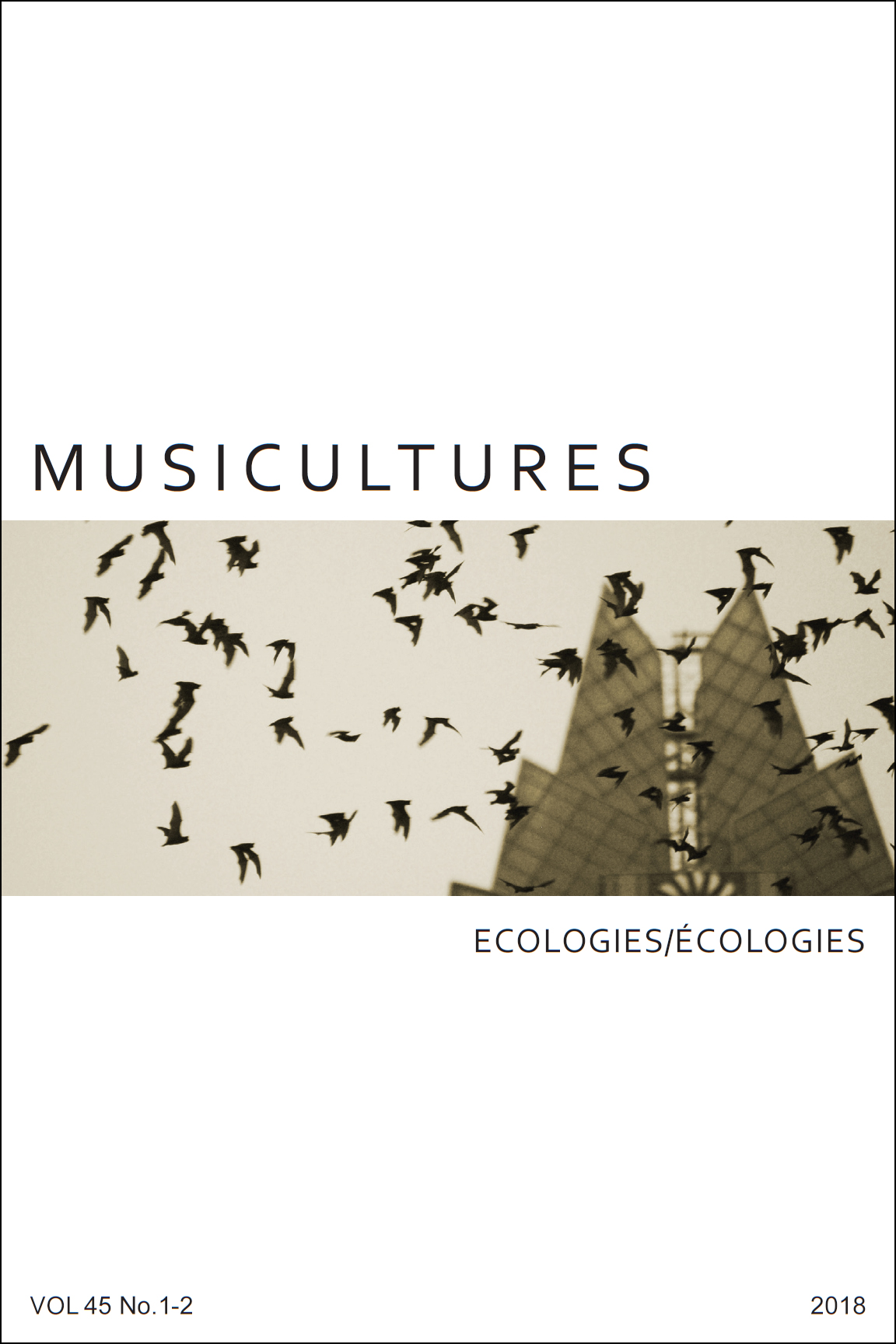Résumé
L’oeuvre fields have ears, de Michael Pisaro, est une série de dix morceaux qui incarnent une approche écologique de la composition. L’idée maîtresse de cette oeuvre est que la localisation d’un son est aussi importante (voire davantage) que sa situation temporelle, et que la façon dont un auditeur comprend un son est affectée par la position dans l’espace à la fois de l’auditeur et du son. Cet article considère cette oeuvre comme exemplaire et représentative de la pensée écologique de James Gibson au sujet de la composition, car elle met au premier plan le mouvement et l’espace, et crée d’étranges mondes virtuels en combinant des sons musicaux, des bruits et des enregistrements de terrain. Il explore également l’idée que la perception gibsonienne présentait des affinités significatives avec l’École esthétique de Kyoto, et analyse la musique de Pisaro en utilisant des méthodologies issues des deux disciplines.Ébauche de règlement relatif aux droits des auteurs d’articles publiés dans MUSICultures
- L’auteur conserve ses droits sur son travail.
- L’auteur cède au propriétaire de la revue (The Canadian Society for Traditional Music / La Société canadienne pour les traditions musicales) l’exclusivité de la publication de son œuvre.
- L’auteur peut publier une version pré- ou post- publication de son travail (voir les définitions ci-dessous) sur un site Internet personnel jusqu’à douze mois après sa publication dans MUSICultures. Au bout de douze mois, la version pré-publication doit être remplacée par la version publiée.
- L’auteur a la possibilité de déposer le PDF de son travail publié sur un répertoire en ligne à but non lucratif douze mois après que son travail ait été publié dans MUSICultures, ou par la suite à n’importe quel moment à sa convenance.
- Un tel dépôt doit comporter un lien renvoyant à son travail sur le site Internet de MUSICultures, soit https://journals.lib.unb.ca/index.php/MC/article/view/19996
Une pré-publication est un travail en cours – une contribution non encore acceptée, voire encore non soumise, à MUSICultures.
Une post-publication est la version d’une contribution après évaluation par les pairs et acceptation par MUSICultures, les corrections y ayant été apportées.
La version publiée est le fichier PDF de la contribution telle qu’elle apparaît dans MUSICultures.
Veuillez noter que academia.edu et ResearchGate.com sont tous deux des répertoires à but lucratif ; les auteurs ne peuvent y déposer les versions PDF publiées de leur travail avant la fin de la période d’interdiction imposée par la revue.
Pour les autorisations de réimprimer ou de traduire des textes de MUSICultures, veuillez contacter Heather Sparling, rédactrice en chef de MUSICultures (heather_sparling@cbu.ca).

